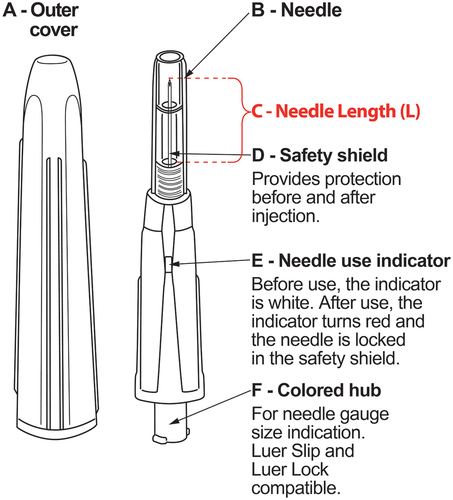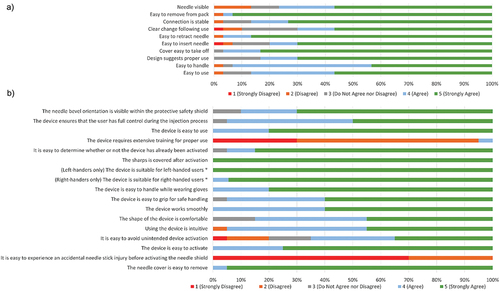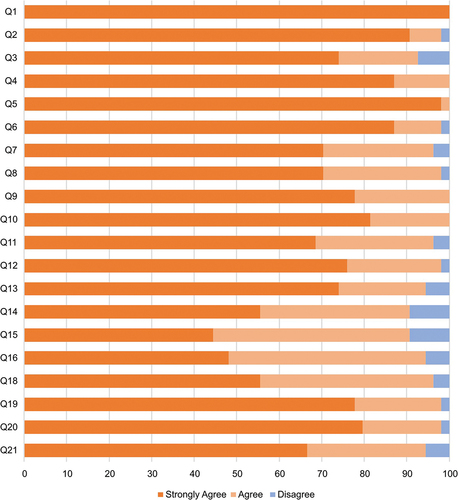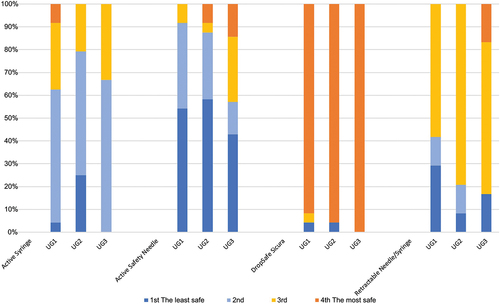Figures & data
Figure 1. Passive safety needle, available in eight different needle gauges (0.3–1.3 mm) and lengths (13, 16, or 25 mm). A-Outer cover; B-Needle; C-Entire needle length penetrating the skin (L); D-Safety shield; E-Needle use indicator; F-Colored needle hub. This passive system means that the device does not require any activity of the user and is activated automatically during the movement of the needle slider when the needle is inserted into the tissue. The needle is packed in a cover that functions as an additional protection against accidental activation and blocking of the needle. When a user removes the cover, the needle is contained within the safety shield. When administering the injection, the safety shield retracts while the needle inserts into the skin. After injection, the needle automatically locks within the safety shield, preventing further use. When the safety mechanism is activated, a red indicator appears.

Table 1. Results from two usability and safety studies of the passive safety needle in nurses, pharmacists, and physicians (studies 1&2).
Table 2. Characteristics of participants in a usability and safety study of the passive safety needle in nurses, pharmacists, and physicians (Study 3).
Table 3. Most problematic errors, difficulties, and close calls encountered that were deemed safety critical* in the usability and safety studies of the passive safety needle in nurses, pharmacists, and physicians (studies 1&2).
Figure 2. Evaluation of usability of the passive safety needle across all participants in a) Study 1 and b) Study 3. The values above the columns are number of patients in Study 1 and average rating in Study 3. * in Study 3: 17 right-handed evaluators and one ambidextrous evaluator (who performed all 25 injections with their right hand) responded to statement no. 10; two left-handed evaluators responded to statement no. 11.

Table 4. Overall evaluation of the passive safety needle by the participants (Study 1).


